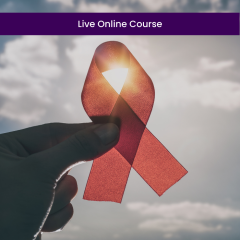Risk Taking among Adolescents with Intellectual Disabilities (1 CE)
Number of Credits: 1
This course is for: Clinical Psychologists, Counselors, Marriage & Family Therapists, and School Psychologists
Course By: Ken Springer, PhD
Content By: Wagemaker, E., Huizenga, H. M., Dekkers, T. J., Collot d'Escury-Koenings, A. L., Salemink, E., & Bexkens, A. (2020). Why do those "risk-taking adolescents" take risks? The combined effects of risk encouragement by peers, mild-to-borderline intellectual disability and sex. Journal of Abnormal Child Psychology, (48), 573-587.
https://doi.org/10.1007/s10802-020-00617-8
Course Description: Adolescents with mild to borderline intellectual disability (MBID) show relatively high levels of risk-taking behavior, but it is unclear whether the extent of their risk taking is influenced by gender and peer encouragement. The present study explored these variables by means of a risk-taking task that adolescents with MBID and typically developing peers completed in the presence or absence of peer encouragement. The researchers found that boys with MBID took more risks than typically developing boys when there was negative peer encouragement (i.e., belittlement or threat of exclusion if the risky behavior is not performed), but that in the absence of peer encouragement, boys with MBID took fewer risks. These and other findings suggest that prevention and intervention approaches designed to reduce risky behavior among adolescents with MBID should take into account both gender and peer influences.
Learning Objectives:
- Describe the rationale for the study and the experimental methods used to gather data
- Describe the main findings of the study concerning the impact of gender and peer encouragement on risk taking among adolescents with MBID
- Integrate the strengths and limitations of the study, and summarize the practical implications for reducing risky behavior among adolescents with MBID
Course Outline:
- Read and understand Why do those "risk-taking adolescents" take risks? The combined effects of risk encouragement by peers, mild-to-borderline intellectual disability and sex
- Review the Course Description and Learning Objectives
- Analyze the rationale for the study and the experimental task used to compare adolescents with MBID to typically developing peers
- Distinguish among gender and peer influences on the extent of risk taking among adolescents with MBID
- Integrate the study's key findings, strengths, limitations, and clinical implications
- Work through the post-test questions, using the article as the sole basis for your answers
- Revisit the article for any missed questions and/or to better understand the impact of gender and peer influences on risk taking among adolescents with MBID
Approvals:
| Board Approvals | American Psychological Association (APA), NBCC, Florida Board - Social Work, MFT, Counseling, and Psychology, NYSED - Social Work, MFT and Counseling Only, American Academy of Health Care Providers in the Addictive Disorders |
|---|---|
| CE Format | Online, Text-Based |







